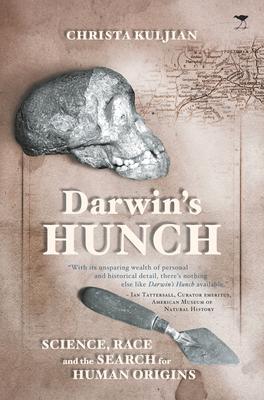The announcement of the Homo naledi hominid fossils by Professor Lee Berger in September 2015 at Maropeng outside Johannesburg dominated the news and headlines for months internationally. The public reaction to the find indicated a fascination in the search for human origins, and that the concept of race and human evolution are linked in many people's minds.
Christa Kuljian traces the history of South African palaeoanthropology and genetics research in order to make sense of science and race in the quest to understand human origins. Over time, the nature of the search has shifted and changed. What are we looking for after all?
Darwin's hunch in 1871 was that humans evolved in Africa, but very few European scientists agreed. Raymond Dart wrote in Nature in February 1925 that the Taung Child Skull supported Darwin's theory. Dart believed he had found the "missing link" between apes and humans. Again, few scientists agreed. Over the past century, the search for human origins has been shaped by the changing social and political context. Reflecting colonial thinking, Raymond Dart followed the practice in the US and Europe of collecting human remains and characterising human skeletons into racial types. He thought that there was a Bushman racial type that might provide a clue to human evolution. In 1936, he led a Wits University expedition to the Kalahari to study this imaginary racial type. One of the people he met and measured was a young woman named /Keri-/Keri. She died two years later. Her body was embalmed and taken to Wits University where her skeleton became part of the Raymond Dart Skeleton Collection. The book uncovers the sad story of what happened to her remains. In addition to /Keri-/Keri, Kuljian introduces us to a range of people who were in the shadows of the well-known scientists.
The book shows how Prime Minister Jan Smuts supported the search for human origins in the 1920s, 30s and 40s, how the concept of human evolution was opposed by the apartheid government, and how the post-1994 South African government and President Thabo Mbeki, with encouragement from Phillip Tobias, celebrated the fact that Africa is the Cradle of Humankind. Yet the search continues. In 1987, the publication of 'Mitochondrial DNA and Human Evolution' suggested that all living humans could trace their ancestry back to Africa 200,000 years ago. Many scientists and the general public in the West were slow to accept such a claim. Genetic research continues today, based not on fossils or skeletons, but on DNA samples. Kuljian examines current thinking and approaches to the ongoing search and explains why for much of the past century so many scientists were reluctant to accept Darwin's Hunch.
